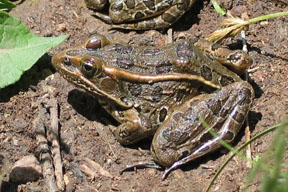 Light pollution doesn’t get much respect. It is worst in urban areas, which most people in most places have pretty much given up on for wildlife conservation. Until recently, it hasn’t been well studied. And, like lots of other pollutants, human health and well-being are the focus of most of that research.
Light pollution doesn’t get much respect. It is worst in urban areas, which most people in most places have pretty much given up on for wildlife conservation. Until recently, it hasn’t been well studied. And, like lots of other pollutants, human health and well-being are the focus of most of that research.
However, it seems likely that humans are among the species best adapted to light pollution (which may be why we create so much of it). It’s impact is more profound on other species.
A recent documentary, The City Dark, shown on PBS, focuses mostly on the human impacts of light pollution, but touches on wildlife issues as well. You can watch it on-line this weekend, here.
While we strive to give you “news you can use” in every post, this is more of a “something to think about,” with extra appeal since it is watching TV instead of more science journal reading.
The City Dark, PBS web page.
The site for the film itself is here.
If you are interested in media coverage of the documentary, make sure to visit this post on the filmmaker’s blog.
Photo: Filmmaker Ian Cheney on rooftop, courtesy of Wicked Delicate Films

 A designation as endangered or threatened for the Western population of the northern leopard frog was
A designation as endangered or threatened for the Western population of the northern leopard frog was